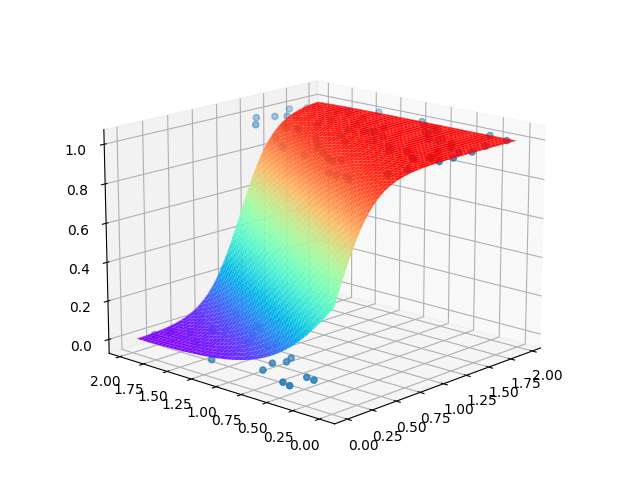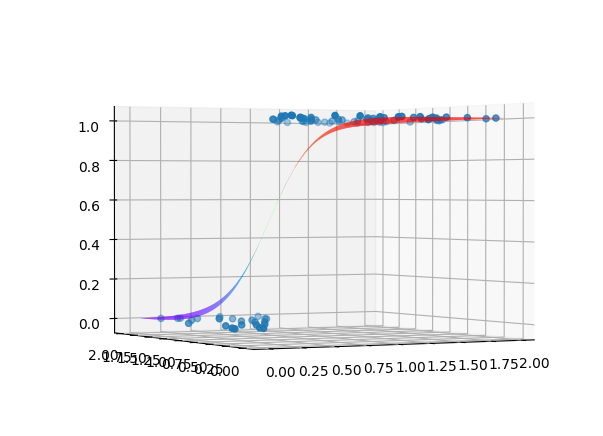高维空间——面对多个输入的问题
文章发布时间:
文章总字数:
预计阅读时间:
文章总字数:
738
预计阅读时间:
3 分钟
之前我已经讨论了从多个方面观察事物的问题,最后使用增加隐藏层来实现。但至始至终,我都只考虑了一个输入的情况,这也是之前的所有结果均可以在一个平面直角坐标系中画出。而现在,我们来考虑有多个输入的情况,这时,得到的结果便不再是一个平面图像了。
自然,为了更直观的看到最终拟合的状态,我们需要画一个图。我单独封装了一个plot_utils.py,这样直接import,在需要时就可以直接调用其中的函数。
1 | |
而这次,为了展现多个输入的情况,产生数据集的函数也有所不同。
1 | |
它会产生一个两列的数组。可以使用numpy库的特性分割开得到两组输入。
1 | |
再将前向传播封装为一个函数:
1 | |
最后,依旧利用反向传播与梯度下降算法进行学习拟合。
1 | |
最后我们可以得到这样的结果:

如果我们从另一个角度来看的话,它就和添加了激活函数后的最简单的Rosenblatt感知器模型得到的结果类似:

输入数据的增加会导致维度增加,但最为三维生物我们无法具象化三维以上的模型,但对于计算机来说,增加一个输入就是增加一维数组,这样高维空间的学习与计算对他来说也可以实现